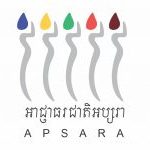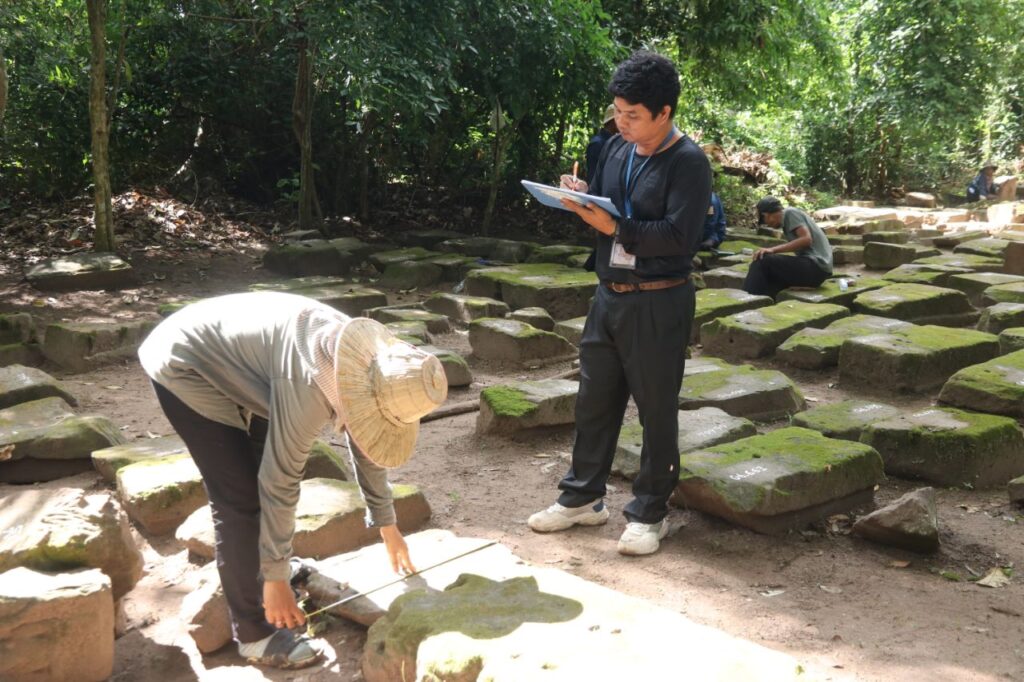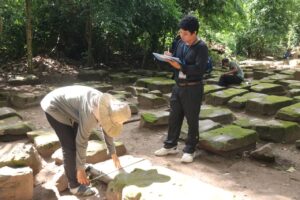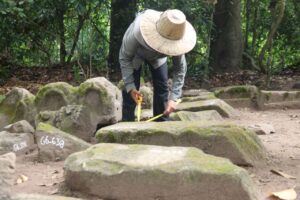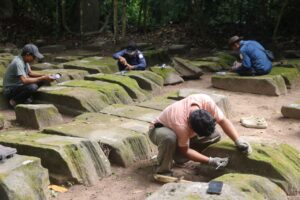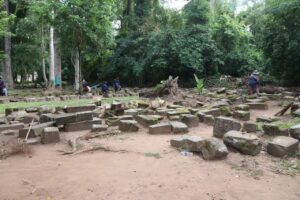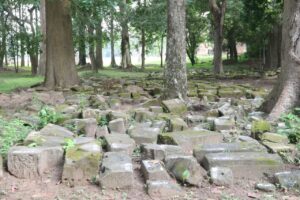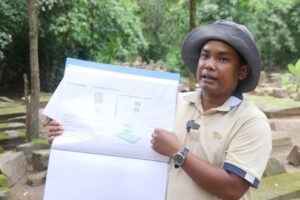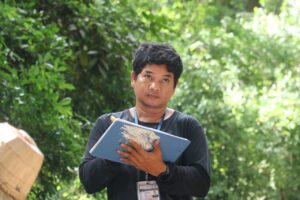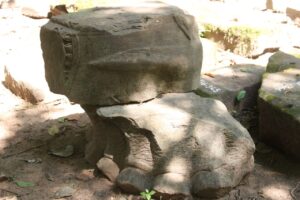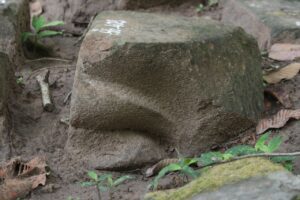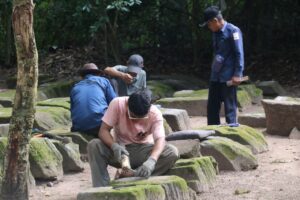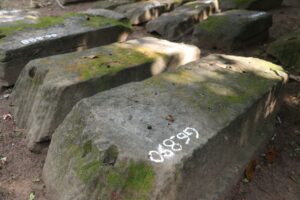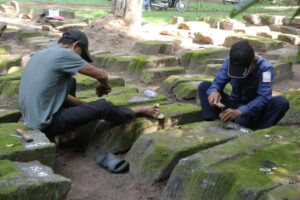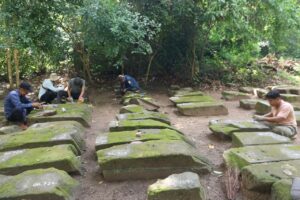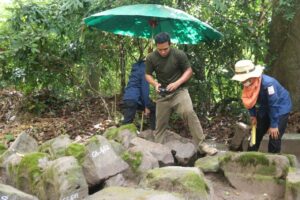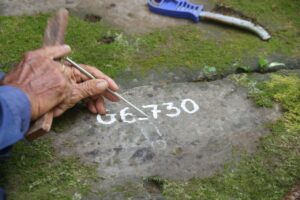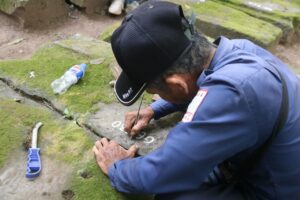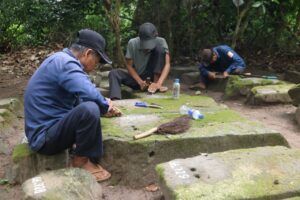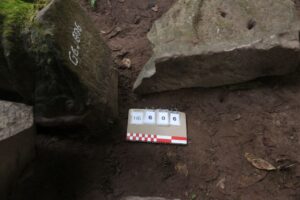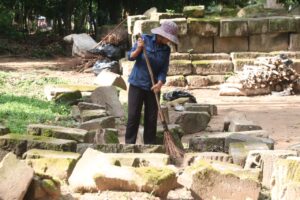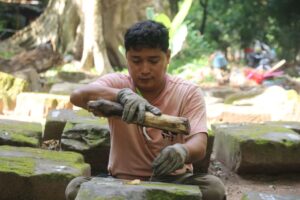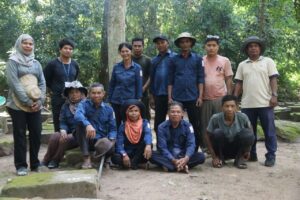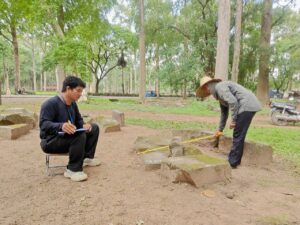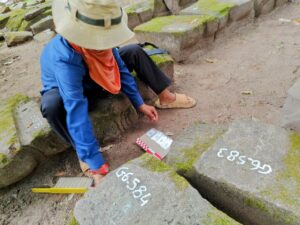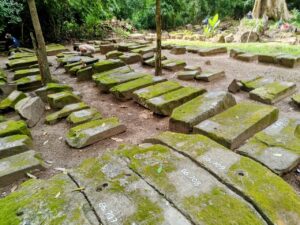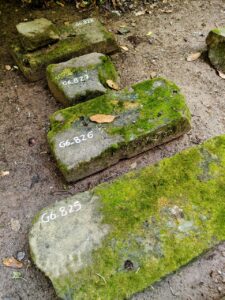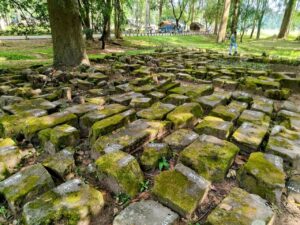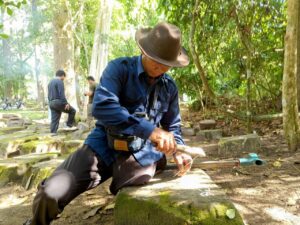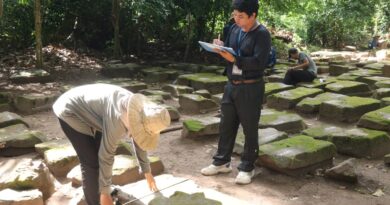ក្រុមការងារនៃនាយកដ្ឋានអភិរក្សប្រាសាទ និងបុរាណវិទ្យានៃអាជ្ញាធរជាតិអប្សរា កំពុងរៀបចំចុះបញ្ជីថ្មនៅជុំវិញប្រាសាទបាយ័នដើម្បីទុកដាក់ឱ្យបានថ្មល្អប្រសើរ មានភាពងាយស្រួលក្នុងការដឹងប្រភេទថ្ម។
លោក ធឿន សុខុន មន្រ្តីបច្ចេកទេសនៃនាយកដ្ឋានអភិរក្សប្រាសាទ និងបុរាណវិទ្យា បានឱ្យដឹងថាក្រុមការងារបានអនុវត្តកិច្ចការនេះអស់រយៈពេលចូល៥ខែមកហើយ ដោយកំណត់យកតួអក្សរសម្រាប់តាង។ ចំពោះថ្មទាំងនេះ មានខ្លះជាបំណែកព្រះពុទ្ធរូប ព្រះកេស ផ្តែរ និងចម្លាក់ផ្សេងៗ។
បុរាណវិទូ លោក ផុន តារា បានឱ្យដឹងថា ថ្មដែលកំពុងរៀបចំទុកដាក់ឱ្យបានល្អនេះ នឹងត្រូវយកទៅរក្សាទុកនៅបរិវេណប្រាសាទបាភួន។ ចំណែកបំណែកថ្មខ្លះដូចជាកំពូល ឬព្រហ្មមុខបួនជាដើម អ្នកជំនាញនឹងរៀបចំផ្គុំទៅតាមទីតាំងដើមវិញ ប្រសិនជាអាចរកឃើញ។ លោក តារា សង្ឃឹមថា ការរៀបចំនេះនឹងធ្វើឱ្យថ្ម មានសណ្ដាប់រៀបរយល្អ ងាយស្រួលក្នុងការយកមកប្រើប្រាស់ ឬជួសជុលប្រាសាទឡើងវិញ ក៏ដូចជាលើកតម្លៃប្រាសាទនាពេលអនាគត៕
អត្ថបទ៖ នាង សំណាង
រូបភាព៖ ភោគ ជា, ស៉ិន ប្រណី
A dedicated team from the Department of Conservation of Monuments and Preventive Archaeology of the APSARA National Authority is actively engaged in a project to register stones surrounding the Bayon Temple. This initiative aims to improve the storage and identification of various stone types, enhancing the preservation efforts of this iconic site.
Mr. Thoeun Sokhon, a technical officer involved in the project, reported that the team has been working diligently for the past five months to catalog the stones designated for inscription. Among these stones are fragments of Buddha statues, lintels, and other significant sculptures that contribute to the rich heritage of the temple.
Archaeologist Mr. Phon Dara emphasized the importance of this project, noting that the carefully prepared stones will be stored at the Baphuon Temple complex. He highlighted that certain stone fragments, including pieces representing the top or four-faced Brahma, will be arranged in their original positions if they can be located. Mr. Dara expressed optimism that this organized arrangement will facilitate easier access for repairs and restoration efforts, ultimately enhancing the temple’s historical value for future generations.
Article by Neang Samnang
Photos by Phouk Chea, Sin Broney
Translation by Net Phirun
